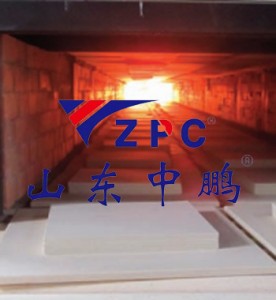In the continuous development of modern industry and technology, the performance of materials plays a crucial role. Especially when facing the challenges of high temperature environments, the stability of a material’s operation directly affects the performance and lifespan of related equipment and products. Silicon carbide products, with their excellent high-temperature resistance, are gradually becoming the ideal choice for many high-temperature application fields.
Silicon carbide, from a chemical structure perspective, is a compound composed of two elements: silicon (Si) and carbon (C). This unique atomic combination gives silicon carbide unique physical and chemical properties. Its crystal structure is very stable, and atoms are closely connected through covalent bonds, giving silicon carbide strong internal bonding force, which is the basis of its high temperature resistance.
When we turn our attention to practical applications, the high-temperature resistance advantage of silicon carbide products is fully demonstrated. In the field of high-temperature industrial furnaces, traditional lining materials are prone to softening, deformation, and even damage under prolonged high temperature exposure, which not only affects the normal operation of the furnace but also requires frequent replacement, increasing costs and maintenance difficulties. The lining material made of silicon carbide is like putting a strong “protective suit” on the furnace. At temperatures as high as 1350 ℃, it can still maintain stable physical and chemical properties and will not easily soften or decompose. This not only greatly extends the service life of the furnace lining and reduces maintenance frequency, but also ensures the efficient and stable operation of industrial furnaces in high-temperature environments, providing reliable guarantees for the production process.

For example, in the aerospace field, when flying at high speeds, aircraft generate a large amount of heat through intense friction with the air, causing a sharp increase in surface temperature. This requires that the materials used in aircraft must have good high-temperature resistance, otherwise they will face serious safety hazards. Silicon carbide based composite materials have become important materials for manufacturing key parts such as aircraft engine components and aircraft thermal protection systems due to their excellent high-temperature resistance. It can maintain good mechanical performance under extreme high temperature conditions, ensure the structural integrity of components, help aircraft overcome speed and temperature limitations, and achieve more efficient and safe flight.
From a microscopic perspective, the secret of high temperature resistance of silicon carbide lies in its crystal structure and chemical bond characteristics. As mentioned earlier, the covalent bond energy between silicon carbide atoms is very high, which makes it difficult for atoms to easily detach from their lattice positions at high temperatures, thus maintaining the structural stability of the material. Moreover, the thermal expansion coefficient of silicon carbide is relatively low, and its volume change is relatively small when the temperature changes dramatically, effectively avoiding the problem of material fracture caused by stress concentration due to thermal expansion and contraction.
![]()
With the continuous advancement of technology, the performance of silicon carbide products is also continuously improving. Researchers have improved the preparation process, optimized material formulations, and other means to elevate the high-temperature resistance of silicon carbide products, while also expanding their application possibilities in more fields. In the future, we believe that silicon carbide products will shine and generate heat in more industries such as new energy, electronics, and metallurgy with their excellent high temperature resistance, contributing to the development of various industries.
Post time: Jul-11-2025